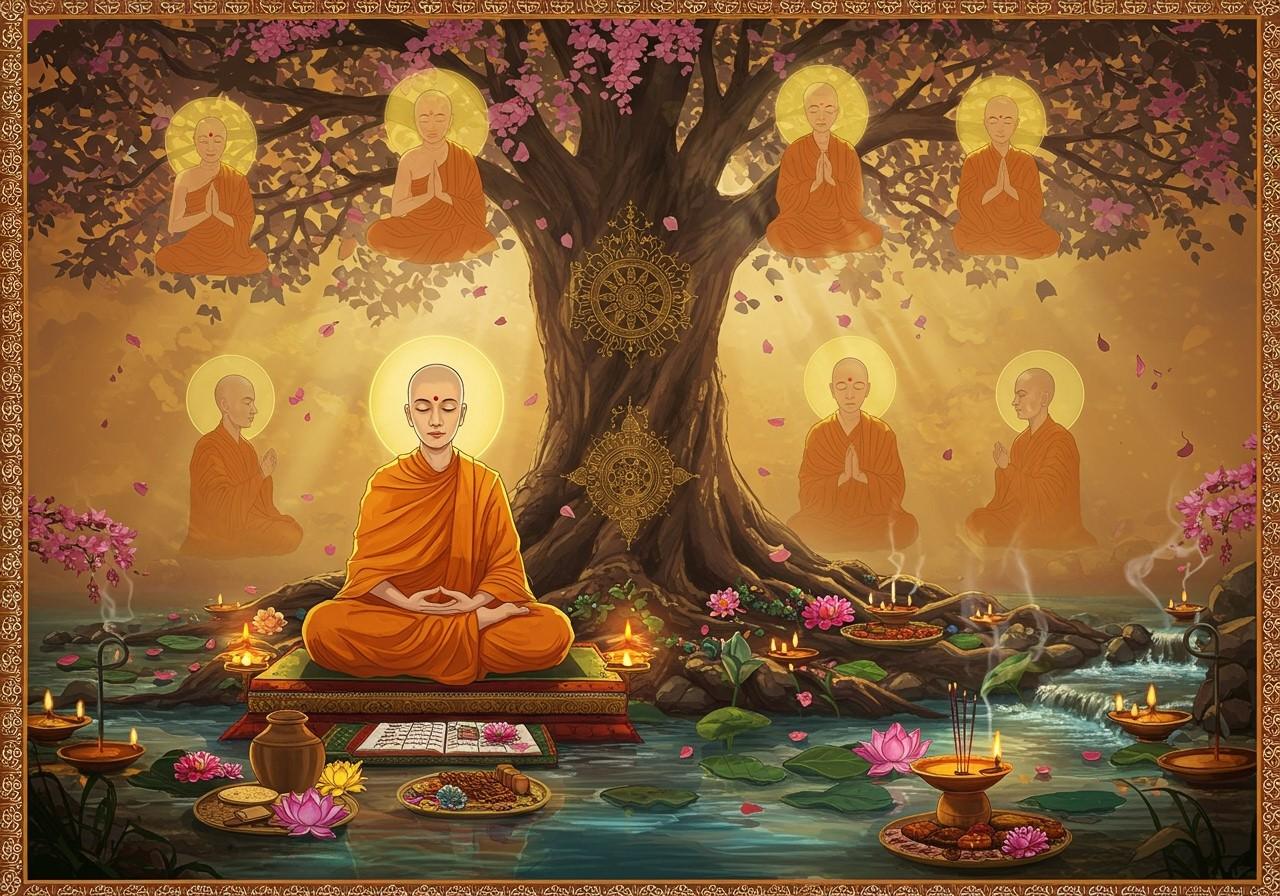
The Bhikkhunī Patimokkha and Vinaya are fundamental texts outlining the monastic guidelines for Buddhist nuns, specifically the 311 rules and the Eight Garudhammas. This guide offers a comprehensive overview of these regulations, aiming to provide culturally rooted, middle to upper-middle-class Indians aged 25-60 with a deeper understanding and appreciation of this tradition. We will explore the key aspects of the Bhikkhunī Patimokkha, Bhikkhunī Vinaya, and Bhikkhunī Vibhanga, explaining their significance and practical application in the daily lives of Buddhist nuns.
Bhikkhunī Patimokkha: The Core Precepts
The Bhikkhunī Patimokkha is a compilation of 311 precepts specifically for ordained Buddhist nuns. Recited bi-monthly during the Uposatha ceremony, these precepts are categorized into groups like Parajika (defeats), Sanghadisesa (formal meetings), and minor rules. Serving as a code of ethics, the Patimokkha maintains monastic discipline and acts as a reminder of the commitment to the Buddhist path, ensuring adherence to the Buddha’s teachings. This practice reinforces the nuns’ dedication to their spiritual journey.
Bhikkhunī Vinaya: A Comprehensive Monastic Guide
The Bhikkhunī Vinaya encompasses the Bhikkhunī Patimokkha and expands upon it with a broader collection of regulations, procedures, and guidelines for nuns’ monastic lives. Divided into sections like the Suttavibhanga (explaining the rules) and the Khandhaka (detailing communal procedures), the Vinaya cultivates discipline, ethical conduct, and mindfulness. It also addresses ordination, training, and conflict resolution within the monastic community, fostering a supportive environment for spiritual development.
Bhikkhunī Vibhanga: Illuminating the Rules
The Bhikkhunī Vibhanga serves as a commentary on the Bhikkhunī Patimokkha, providing detailed explanations, stories, and contextual background for each rule. By exploring the origins and intended purpose of the precepts, including historical and cultural contexts, the Vibhanga deepens understanding and facilitates practical application. This comprehensive understanding of the Vibhanga is crucial for nuns to fully embrace the ethical and moral framework of their monastic lives.
Practical Application and Daily Significance
The rules within the Bhikkhunī Patimokkha and Vinaya are deeply integrated into the daily lives of Buddhist nuns, guiding their behavior, interactions, and spiritual practices. These guidelines cultivate virtues like patience, humility, and compassion, while fostering a harmonious and disciplined community essential for collective spiritual growth. The structure provided by these rules supports meditation, study, and communal activities, ensuring a balanced and focused monastic life.
Comparing Bhikkhunī and Bhikkhu Patimokkha
While the Bhikkhunī Patimokkha applies specifically to nuns, the Bhikkhu Patimokkha outlines the rules for Buddhist monks. Comparing the two reveals differences and similarities in monastic discipline. Both aim to cultivate ethical conduct and mindfulness, but the Bhikkhunī Patimokkha includes additional precepts addressing the unique challenges faced by nuns. Recognizing these distinctions provides a deeper appreciation for the distinct yet interconnected paths of monks and nuns within Buddhism.
Modern Adaptations and Challenges
Applying the Bhikkhunī Patimokkha and Vinaya in contemporary society presents challenges, including interpretation in modern contexts and integration with local customs. Many nuns adapt the rules to modern lifestyles while upholding core principles. Discussions around gender equality and the evolving role of nuns in Buddhist communities are also relevant. Despite these complexities, numerous nuns continue to observe traditional rules, finding balance between tradition and modernity.
Essential Items for Observing the Bhikkhunī Patimokkha from Poojn.in
Following the Bhikkhunī Patimokkha often involves specific attire and items. Poojn.in offers authentic products that support these requirements:
-
Attire:
- Pure Cotton Kora Saree (White): Ideal for ceremonies and offerings, ensuring respectful observance.
- Traditional Suti Saree: Crafted from 100% pure cotton for everyday use, prioritizing comfort and modesty.
- Cotton Dhoti: An essential garment for maintaining simplicity and modesty in accordance with tradition.
-
Meditation and Practices:
- Kushasan (Kush Grass Mat): A traditional meditation seat made with authentic kush grass, jute rope, and red chelli cloth, providing a dedicated space for practice.
- Chamar (Fly Whisk): Used in ceremonies and meditation, crafted with genuine yak tail, symbolizing purification and focus.
- Cheli Ghater Gamcha: A pure cotton cloth used for various ritual purposes, upholding traditional practices.
These items, verified for authenticity and quality, support the observance of Vinaya rules concerning attire and ceremonial requirements. Poojn.in offers secure online ordering and delivery across India. Visit Poojn.in to explore our collection.
Embracing Tradition and Nurturing Spiritual Growth
The Bhikkhunī Patimokkha and Vinaya are essential texts for Buddhist nuns, providing a comprehensive ethical and moral framework. Understanding these rules deepens appreciation for monastic discipline and spiritual practice. For culturally rooted Indians, recognizing these traditions fosters respect and support for the monastic community. This guide serves as a valuable resource for learning about the rules shaping the lives of Buddhist nuns, emphasizing the enduring values of discipline, mindfulness, and compassion.


